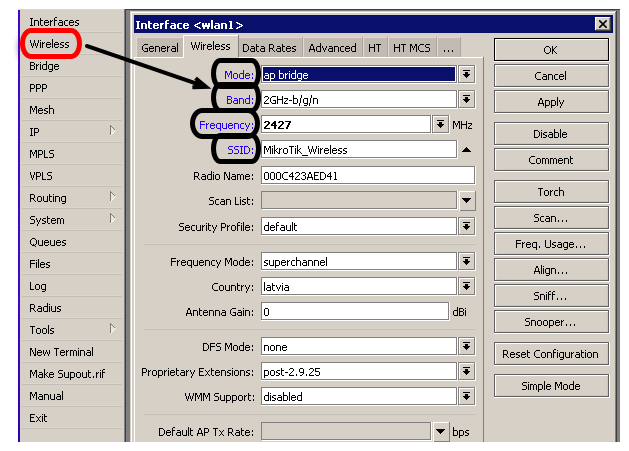Optimizing MikroTik Router Firewall For Network Security
In the world of networking, security is an essential aspect when it comes to protecting your network. MikroTik Firewall is a powerful tool that provides advanced security features to protect your network from unauthorized access, attacks, and other malicious activities. In this post, we will go in-depth about MikroTik Firewall and how to configure it effectively.
What is MikroTik Firewall?
MikroTik Firewall is an advanced security feature that is available in routers manufactured by MikroTik. It is an essential tool that provides the capability to protect networks from unauthorized access and malicious activities. The firewall works by examining every incoming and outgoing packet from the network and blocks the ones that do not meet the pre-defined rules and policies.
Why is MikroTik Firewall important?
The importance of MikroTik Firewall in network security cannot be overstated. It is an essential tool that helps to protect your network from various threats, such as hacking attempts, viruses, spyware, and malware. The firewall provides a secure perimeter around your network, preventing unauthorized access from the outside, and leaks from the inside.
Benefits of MikroTik Firewall
MikroTik Firewall provides many benefits to the network administrator, some of which includes:
- Blocking unauthorized access to your network by hackers and other potential threats
- Preventing data leaks and other security breaches that can cause serious damage to your network and reputation
- Protection against malware and other malicious software that can infect your network and lead to complete system failure
- Monitoring network usage and identifying potential security issues before they become a problem
- Enhanced security policies and configuration options that can be customized to meet the unique needs of your network
How to Configure MikroTik Firewall
Configuring MikroTik Firewall requires a good understanding of networking concepts and MikroTik RouterOS. Here are the essential steps to configure MikroTik Firewall:
- Log into your MikroTik RouterOS using the web interface, Winbox, or Telnet
- Click on the IP option in the menu bar and select Firewall
- Click on the Filter Rules tab and then click on the Add New button
- Define the firewall rule by setting the source, destination, action, and protocol options
- Click on the Apply button to save the rule
- Repeat the process to add more firewall rules
- Review your firewall rules regularly to ensure they are up-to-date and effective
- Test your firewall rules to ensure they are working correctly
Details
Here are some of the critical details that you need to know about MikroTik Firewall:
- It is a Layer 3 firewall that primarily works at the network layer
- It can operate in various modes, including bridge, router, and transparent mode
- It provides advanced security features, such as packet filtering, NAT, port forwarding, and VPN
- It is compatible with various protocols, including IPv4, IPv6, and MPLS
- It provides support for custom firewall scripts that can be used to create custom security policies
Tips
Here are some tips to help you configure and use MikroTik Firewall effectively:
- Ensure that you have a good understanding of the MikroTik RouterOS and networking concepts before attempting to configure the firewall
- Regularly review and update your firewall rules to ensure they are effective and up-to-date
- Keep your RouterOS updated to ensure that it has the latest security patches and bug fixes
- Monitor your network usage regularly to identify potential security issues
- Use the MikroTik Wiki and forums to access tutorials and support
FAQs
Here are some frequently asked questions about MikroTik Firewall:
Q: What is a firewall?
A: A firewall is a security tool that helps to protect networks from unauthorized access and malicious activities. It works by examining every incoming and outgoing packet from the network and blocks the ones that do not meet the pre-defined rules and policies.
Q: What is MikroTik Firewall?
A: MikroTik Firewall is an advanced security feature that is available in routers manufactured by MikroTik. It provides advanced security features to protect your network from unauthorized access, attacks, and other malicious activities.
Q: How does MikroTik Firewall work?
A: MikroTik Firewall works by examining every incoming and outgoing packet from the network and blocks the ones that do not meet the pre-defined rules and policies. It provides advanced security features, such as packet filtering, NAT, port forwarding, and VPN.
Q: What are the benefits of MikroTik Firewall?
A: MikroTik Firewall provides many benefits to the network administrator, such as blocking unauthorized access to your network, preventing data leaks and other security breaches, protection against malware, monitoring network usage, and enhanced security policies.
Q: How can I configure MikroTik Firewall?
A: Configuring MikroTik Firewall requires a good understanding of networking concepts and MikroTik RouterOS. You can configure MikroTik Firewall by logging into your MikroTik RouterOS, clicking on the IP option in the menu bar, selecting Firewall, and then adding new rules.
Q: How can I test my MikroTik Firewall rules?
A: You can test your MikroTik Firewall rules by using network testing tools, such as Nmap, to scan your network and see if the rules are working correctly.
In conclusion, MikroTik Firewall is an essential tool that provides advanced security features to protect your network from unauthorized access, attacks, and other malicious activities. Configuring and using MikroTik Firewall requires a good understanding of networking concepts and MikroTik RouterOS. Following the tips and best practices outlined above, you can configure effective firewall rules and enhance your network security.





Post a Comment for "Optimizing MikroTik Router Firewall For Network Security"